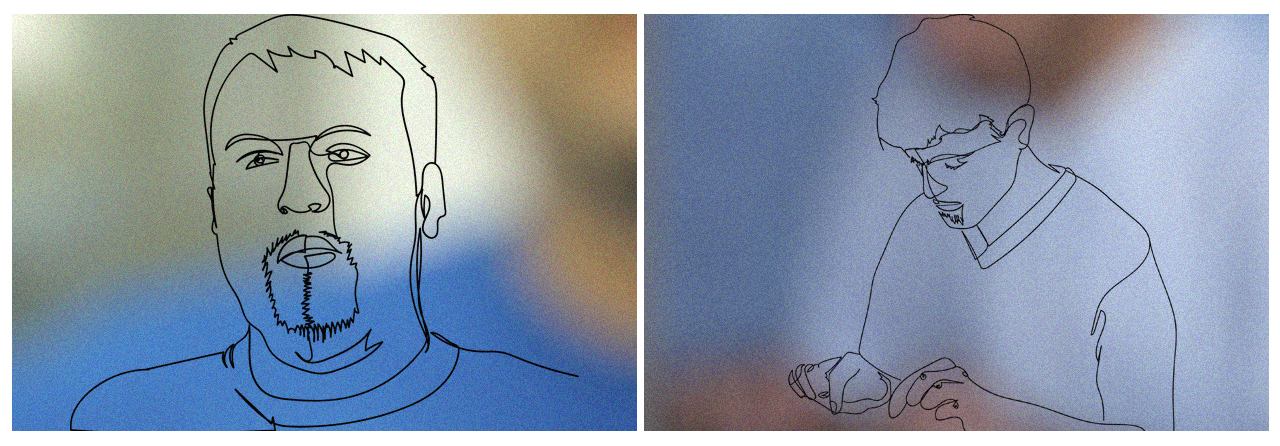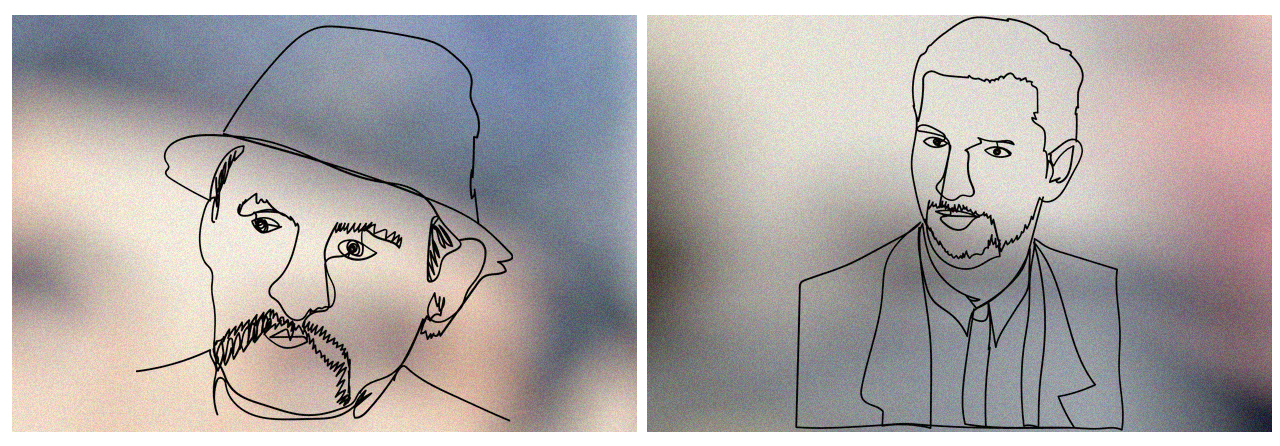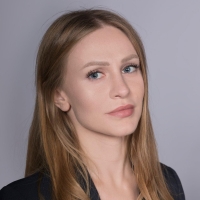Over 20 years after the end of the war in Kosovo, almost all the cases of missing or murdered journalists remain unsolved. Journalist associations from both Kosovo and Serbia have repeatedly called for these cases to be taken up, while family members receive little comfort in terms of new information about their loved ones.
For decades, this topic has divided the country’s ethnic Albanian and Serb communities. In the past few years, commissions have been formed with the intention of maintaining political and institutional interest in the issue. Their conclusions paint a picture of negligence and embedded politicization — superficial investigations, blame games and a lack of grassroots support for the issue to be part of a political dialogue.
Here are the stories of 15 journalists who have been reported missing or killed in Kosovo either at the tail end of the war in Kosovo or in its aftermath and for whom there has still been no justice.
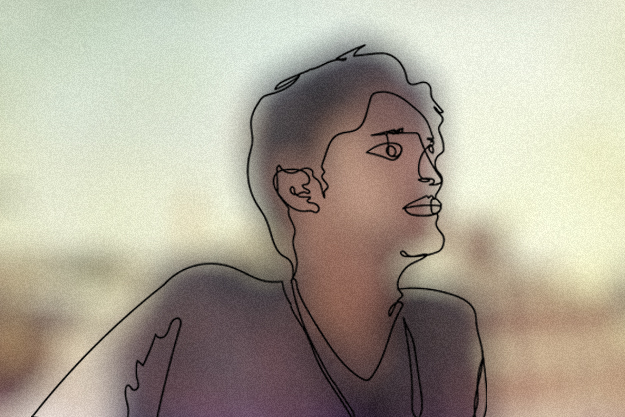
Marjan Melonashi: September 2000
Marjan Melonashi left his workplace in central Prishtina at 2:10 p.m. on September 9, 2000 and has not been seen since. Witnesses report him entering an orange taxi cab across the street for a ride back to his apartment. According to an Associated Press story filed a few days later, he had received several threatening phone calls before his disappearance. His colleagues were worried about his safety.
Melonashi, who reported for the Serbian language program at Radio Television of Kosovo, is one of the 15 journalists who disappeared in Kosovo two decades ago. To this day, no charges have been brought against the perpetrators or those who ordered the assassinations.
Instead, the issue alternates between being a topic brought up only on press freedom anniversaries or one used to point fingers at the governments of Kosovo and Serbia — within the group of missing and assassinated journalists, there are both ethnic Serbs and Albanians. Or those like Melonashi who could count both in his parentage.
Melonashi’s mother, Cica Janković, reported the disappearance of her son that day when he hadn’t come home from work. She went to the United Nations Mission in Kosovo (UNMIK), the executive in the country after the end of the war in June 1999, and its security force. She also reported the disappearance to the International Red Cross and the Serbian Ministry of the Interior.
What happened between the time he entered that orange taxi cab on that fateful Saturday and the moment his parents realized he was missing? Five years later, an investigation into the incident was opened by UNMIK, and confirmed that no-one had been questioned in relation to his disappearance at the time. The investigation was quickly closed and never led to an indictment.
When asking around about Melonashi, reactions are varied. Some claim he was a target because he worked for the Serbian-language program and because the 24-year-old was engaged to an ethnic Serb woman. In the months following the conflict, incidents of reprisal against the Serb population in the country — as well as those considered to have betrayed Kosovo or their ethnic Albanian background — were at an all-time high.
“What is important is that we stop these crimes from being forgotten,” says Jelena Petković, a journalist who has covered this topic for years and has spoken to many of the family members of those who have been killed or gone missing. “We cannot forget these crimes and we need to support every single colleague who wants to deal with this topic.”
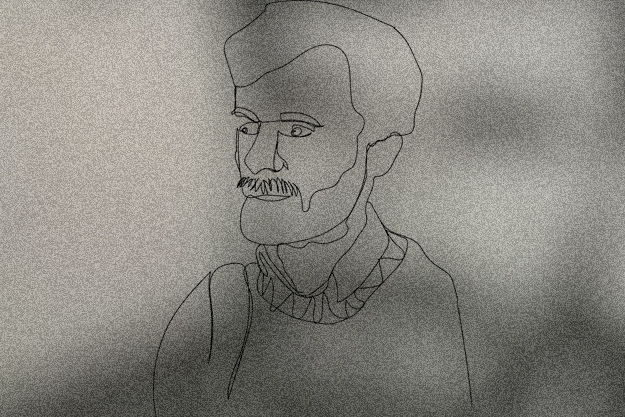
Afrim Maliqi: December, 1998
Afrim Maliqi was a journalist for Bujku (“The Farmer”) newspaper.
Bujku was an interesting case in the journalism scene in Kosovo during the 1990s. When many ethnic Albanian journalists from Kosovo were expelled from their places of work in public radio and TV outlets, and papers in Albanian such as Rilindja (“The Rebirth”) were shut down, the only outlets that were still allowed to print were those considered uncontroversial by the government in Belgrade. An agricultural paper was not seen as a threat to those wishing to clamp down on political dissent among Kosovar Albanians.
So Maliqi and many other journalists decided to publish their political articles in the agricultural newspaper, which suddenly became a source of some of the best reporting in the midst of the increasingly tense atmosphere in Kosovo.
On December 2, 1998, Maliqi was in a car in the Sunny Hill neighborhood of Prishtina with his close friend Hyzri Talla, a commander in the Kosovo Liberation Army (KLA). Talla had come to Prishtina to visit his family during a break in fighting in the Llapi Zone in northeastern Kosovo.
The car with the two men in it was shot at. People in the surrounding buildings who witnessed the shootout from the windows of their apartments heard those who shot at them speak Serbian.
A young girl was injured in the shooting, but never testified out of fear for her life. Police appeared quickly at the scene and a prosecutor also came to visit the scene of the shootout but in testimony many years later, Maliqi’s daughter Gresa says that they are still not sure what happened that day.
One of the key reasons experts believe the issue of murdered or missing journalists remains unresolved is the transitional nature of the Kosovo justice and police system over the years. When Maliqi was killed, the local police force was dominated by ethnic Serbs from Kosovo and was under the political influence of Belgrade. Following the 1999 NATO bombing and the withdrawal of Serbian armed and police forces, Kosovo entered a de facto protectorate period where the police and judiciary bodies were managed by the United Nations Interim Mission in Kosovo until the country declared independence in 2008.
She remembers that the family was not allowed to talk to the police, and was only allowed to collect Afrim’s body a day later. No-one in the family was questioned about the events by the police at the time, but a police officer told them that Maliqi was killed “by 30 bullets to the body.” He was 33 years old.
As one of the founders of the cultural center in Podujeva in 1990, Maliqi initially reported on arts and culture. His first political piece, published in February 1995 in Bujku, was about the discrimination faced on a daily basis by ethnic Albanians who stayed employed in what were effectively Serbian institutions in the 1990s. Gresa says he also reported on massacres, murders and burned villages. To this day, there has been no investigation into his death.
It is difficult to cover this topic without provoking the ire of one or another ethnic group involved in the conflict in Kosovo.
Journalists and others who knew Melonashi claimed that his reporting legitimized the takeover of the main TV outlet in the country by those who were politically in favor of Slobodan Milošević or the ruling elite in Belgrade. RTK, or the Radio Television of Prishtina as it was known during the Yugoslav period, was a TV station that had formerly been dominated by Albanian journalists and met the need for Albanian-language reporting in the former Yugoslavia — a reflection of the demographics in the former Serbian province.
Others would say that Maliqi should have not been fostering close ties to the KLA. In this narrative, since the decentralized guerilla force that confronted the Yugoslav Army and Serbian paramilitaries was a thorn in the side of many, including the Serb-dominated police force, Maliqi put his own life in danger by driving around with a KLA commander.
“As journalists we need to stay away from the politicization of such topics,” Petković explains. “Of course something like this can be politicized. Yet I think this topic needs to be approached from a humanitarian angle, because it’s a question of basic human rights.”
Petković argues that solving these cases could shed light on the practice of silencing political opponents and their supporters through kidnappings or brutal murders. A failure to do so could lead to Kosovo journalists shying away in the future from covering sensitive issues — such as the upcoming indictments against leading KLA figures or Kosovan politicians.
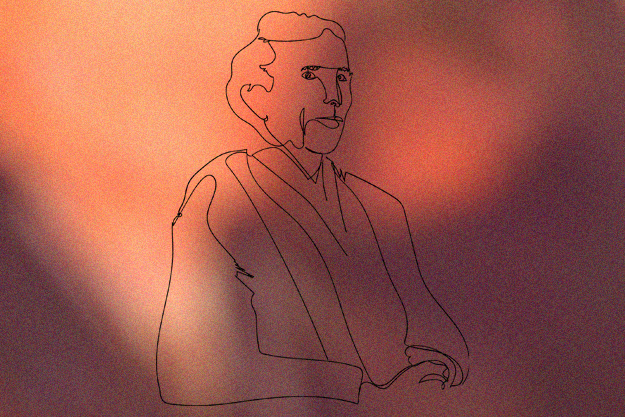
Xhemajl Mustafa: November 2000
Beriane Mustafa has been vocal in requesting that nothing stand in the way of solving the murders of those that were labeled political opponents right after the Kosovo war. Beriane’s father, Xhemajl Mustafa, is probably the most high-profile figure to have become a victim of politically-motivated assassinations in Kosovo. Only days before his murder, he wrote a piece arguing that it was NATO, not the KLA, who had liberated Kosovo.
“I strongly believe there were political motivations behind the assassinations or kidnappings of journalists, and that political forces have contributed to their cases not being resolved to this day,” his daughter says. “It is impossible for a prominent journalist, such as my father, to have been killed in the middle of the day in Prishtina and for no-one to know anything about it.”
A journalist herself, she insists that anyone who chooses to target journalists for extermination or to make them disappear has only one goal in mind: “Silencing the individual and stopping the kind of reporting they are doing, and scaring everyone else out of talking about it or doing similar reporting.”
“So yes, all the murders that were committed were both to silence someone and to scare others,” she explains. Mustafa also believes that the kind of reporting done by some of the journalists who went missing or were killed is not a mitigating circumstance for not bringing their perpetrators to justice.
“I don’t think the ethnic background of journalists should be taken into consideration when these cases are being discussed. Neither should the quality of the reporting they did. While it is clear that certain individuals might have reported in ways thought to be in the direct interest of a particular political force involved in the Kosovo conflict at the time, their deaths were meant to silence them,” she concludes.

Enver Maloku: January 1999
Enver Maloku was a political reporter for the Radio and Television of Prishtina until 1993, when the majority of its Albanian staff was fired or left, citing political pressure. Maloku became the head of the Kosovo Information Center (KIC) — a network of correspondents and, initially, supporters of the Democratic League of Kosovo, or LDK in Albanian.
The KIC aggregated information about what was going on in more remote areas of Kosovo throughout the 1990s, while also promoting the activities of the LDK and its founder, Ibrahim Rugova. As their network expanded throughout the decade, they became the most trusted source of information, acting as a de facto national news agency.
An attempt on Maloku’s life was first made in July 1998 when he was shot at in front of the entrance to his apartment. A second attempt was made in January 1999, once again in front of his apartment. His wife heard the shots and saw the assassins flee the scene. He succumbed to his injuries while being treated in hospital.
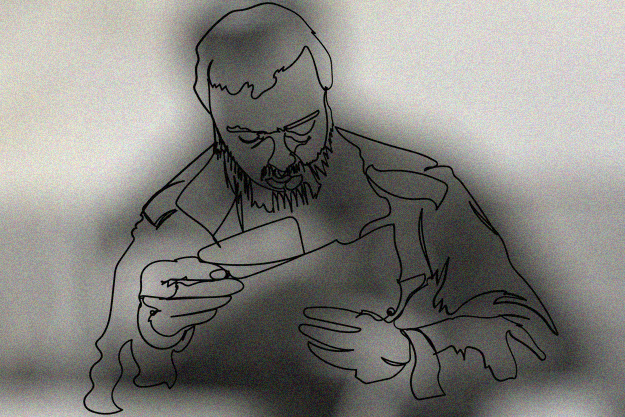
Momir Stokuća: September, 1999
For Momir Stokuća’s sister, ethnic background did not define who she went to for help when she read in the Serbian newspapers about the news of her brother’s murder in Prishtina.
Branka Damjanović was worried when Momo, a nickname their family used for him, did not answer his phone. He had decided to stay in Prishtina after the end of the conflict and worked for the Serbian daily Politika, sure that the international presence would guarantee his safety — and, as his family says, he insisted he had never done anything to make him a target.
Bekim Kastrati and Bardhyl Ajeti: 2001 and 2005
Not all such incidents relate to the chaotic period in the months following the end of the conflict in Kosovo. Journalists Bekim Kastrati and Bardhyl Ajeti were killed in 2001 and 2005 respectively. Both of them worked for the same paper, Bota Sot (“The World Today”) a former diaspora paper still known for its affiliation to the LDK and former president Ibrahim Rugova.
These two murders, in particular, are emblematic of the political divisions in Kosovo within the Albanian community. Rugova became the most identifiable ethnic Albanian political figure from Kosovo starting in the early 1990s, and advocated a peaceful yet strategic approach to voicing the political demands of Kosovar Albanians.
This clashed with the approach of the KLA, who thought that an armed resistance was necessary both to protect Kosovo citizens, who were being targeted by the Yugoslav Army at the time, and to draw attention to the crimes being committed in the country. This ideological divide would carry into the relatively peaceful period in the early 2000s.
Kastrati and Ajeti had both criticized the KLA in their writing. Bota Sot supported the arrest of former members of the KLA as a part of “a broader anti-crime campaign.” Kastrati was shot while driving with Besim Dajaku, a former bodyguard for President Rugova, and with Gani Geci, a prominent LDK member and a former KLA fighter himself. Kastrati and Dajaku did not survive, while Geci survived with injuries. Geci, too, has been vocal in criticizing the KLA as a former insider.
In his weekly columns Ajeti defended the need to prosecute members of the KLA at the International Criminal Tribunal for the former Yugoslavia (ICTY). He criticized nationalist Albanian protestors for demanding that international forces release arrested members of the KLA.
According to a report from the Council for the Protection of Journalists published at the time of his death, Ajeti was in the process of leaving Bota Sot to establish a rival newspaper that would support his line of reporting on this issue. In May 2005, Ajeti filed complaints alleging that he had been threatened for his writing. He was driving from Prishtina to Gjilan on June 3, 2005 when he was shot point blank from a passing car.
Krist Gegaj: September, 1999
Krist Gegaj and Shaban Hoti, killed in 1999 and 1998, were not journalists for the entirety of their careers even though they were working as journalists at the time they were killed. Gegaj became the executive secretary of the League of Communists of Kosovo in the early 1990s — a controversial decision considering that the League of Communists of Kosovo had been “cleansed” of its most powerful Albanian members in the years prior. Those who stayed in the party — and assumed top roles — were seen as loyal to Slobodan Milošević.
According to research compiled by the Serbian Journalist Association and an interview with the head of the Radio Television of Prishtina at the time, Miladin Jović, Gegaj had approached him about a job in 1997. Jović hired him in the understaffed Albanian-language radio and television desk. He says Gegaj did not have problems doing his job until April 1999, which is when he asked not to have to come into work every day because he thought his safety was at risk.
Gegaj was living in Istog, where he had held a local political position before, when he was intercepted in September 1999 while tending to livestock close to his property. Stories of the barbarous way in which he was tortured to death still circle the Istog region, evoking shudders even from those who do not approve of the decisions of the journalist-turned-politician. His body was found a day later in a nearby river.
Shaban Hoti: July, 1998
Shaban Hoti, on the other hand, is often left out from the lists of journalists who disappeared or were killed during and after the Kosovo conflict. For one thing, the former Russian language professor was acting as a translator for Russian journalists who were traveling to western Kosovo to interview members of the KLA in July 1998. His death raises the question of whether media workers — those who are not journalists or reporters yet play a crucial role in the production of the story — should be included when the targeting of journalists is discussed.
Bekim Blakaj, the head of the Humanitarian Law Center Kosovo, spoke to Petković about the case for an article published by the Association of Serbian Journalists. He said that Hoti and the Russian journalists were told by the Serbian police not to go past a point they reported was controlled by the KLA. The KLA had been known to stop buses and cars and take passengers off them, according to Blakaj.
Blakaj refers to Hoti as a translator and a journalist, while it was clear he was captured while solely working as a translator at the time. He and his Russian colleagues were intercepted by the KLA on July 21. The journalists were released the same day, but Hoti was shot five days later on Berisha Mountain.
Hoti’s remains were found in 2001 in the location where he is thought to have been shot. Unlike all the other cases, in Hoti’s case the perpetrators of the crimes were charged. Hajredin Balaj, a member of the KLA from that region, was sentenced by the ICTY to 13 years in prison for the murder of Hoti and eight other civilians.
Ljubomir Knežević, Mile Buljević and Aleksandar Simović: 1999
Others, such as Ljubomir Knežević, Mile Buljević and Aleksandar Simović went missing in May, June and August of 1999 and very little is publicly known about the circumstances of their disappearances.
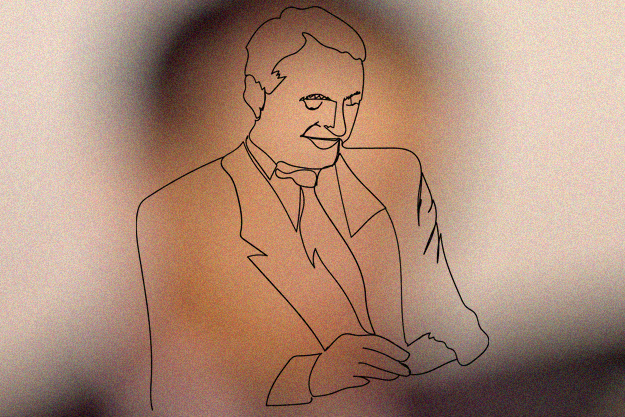
Shefki Popova: September, 2000
Shefki Popova was one of the most prominent former Rilindja journalists at the time of his death. When the long-standing Rilindja newspaper briefly started up again after the war, he worked as their correspondent from Vushtrri. At a time when Kosovo’s best regional journalists were moving to the capital for more lucrative jobs, Popova chose to stay in Vushtrri.
Friends indicate that it was not a coincidence that he was killed one month ahead of the first municipal elections to have been held in Kosovo since the war. Kosovo citizens participated in these elections en masse, with some estimating that around 80% of eligible voters took part. However, it was also the first opportunity for parties to create local strongholds since power had until then mainly been focused at a national level. A figure such as Popova could have been seen as a threat to this new dynamic.
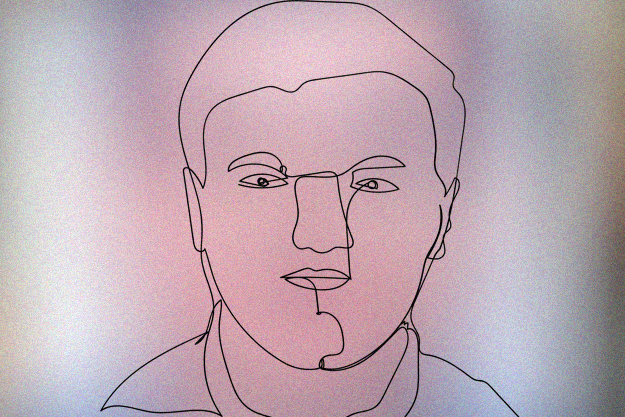
Ranko Perenić and Đuro Slavuj: August, 1998
Ranko Perenić and Đuro Slavuj are the two earliest registered cases of journalists missing during the conflict in Kosovo.
They disappeared on a reporting trip while working for Radio Prishtina in August of 1998, on their way to the Sveti Vrači monastery in Zočište, where they intended to do a story on the return of abducted monks. They accidentally ventured into the municipality of Rahovec that was under the control of the KLA at the time, and were last seen on the afternoon of August 21 in Velika Hoča.
Perenić and Slavuj are probably more widely known than most of the people on this list since the memorial plaque that was erected close to where they went missing has been taken down several times to date. The plaque, which has the inscription “Our colleagues Đuro Slavuj and Ranko Peretić went missing here on August 21, 1998 — we are looking for them” in Serbian and Albanian, has been vandalized and removed seven separate times since first being erected.
For Tatjana Lazarević, editor in chief of Kossev — the leading critical Serbian language outlet in Kosovo — the conditions for solving these crimes have not existed since the war.
“First of all, the political climate isn’t there,” she says. “There aren’t institutions who do their work the right way, and they are deeply criminalized. In this context, I don’t expect any criminal offense to be dealt with properly, let alone criminal offenses where the victims are those whose job it is to keep politicians and institutions accountable.”
She also says that the ethnic component in these cases — which in her opinion should not play a role — has led to a lack of interest in dealing with them.
“The war is over, but the two nations have not only not achieved reconciliation, but the context of hate and animosity is firmly cemented especially within the ruling structures and state narratives,” Lazarević says. “The ruling elites are the same as we have had since the early 1990s. The people leading all the processes in our countries have been quite literally the exact same people for several decades. In such a situation, we should not be surprised that there’s no epilogue to this issue.”
She predicts that as long as international organizations offer the main push for these cases to be dealt with, little success will be achieved in solving them. “Such initiatives have been reduced to peace-industry-driven projects. It becomes a sexy subject for a while, usually pushed by someone on the sidelines,” she says.
“There are no grassroots initiatives on both sides. It has not been initiated or driven by the journalists themselves or the respective journalist associations. For it to be a genuine grassroots initiative, two things need to exist: the realization that this has to be solved, and the belief that it’s a worthy cause to become involved in.”
While political leaders in Kosovo as well as the journalist associations in Kosovo and Serbia continue to bring up the topic of the unresolved murders and disappearances, the burning issue at the heart of the entire debate is often ignored. For Lazarević, no journalist will ever feel completely at ease for as long as the possibility of this happening again hangs in the air.
“Solving an issue like this will make it easier for me to do my job as a journalist in Kosovo,” she says. “We owe it both to our profession and to our communities.”K
Images: Arrita Katona & Atdhe Mulla / K2.0. All images are based on archive photos of the missing individuals — there are no images of Krist Gegaj, Shaban Hoti or Mile Buljević since no archive photos were available in the public domain.
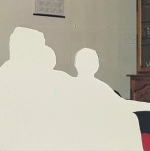
Back to Monograph






